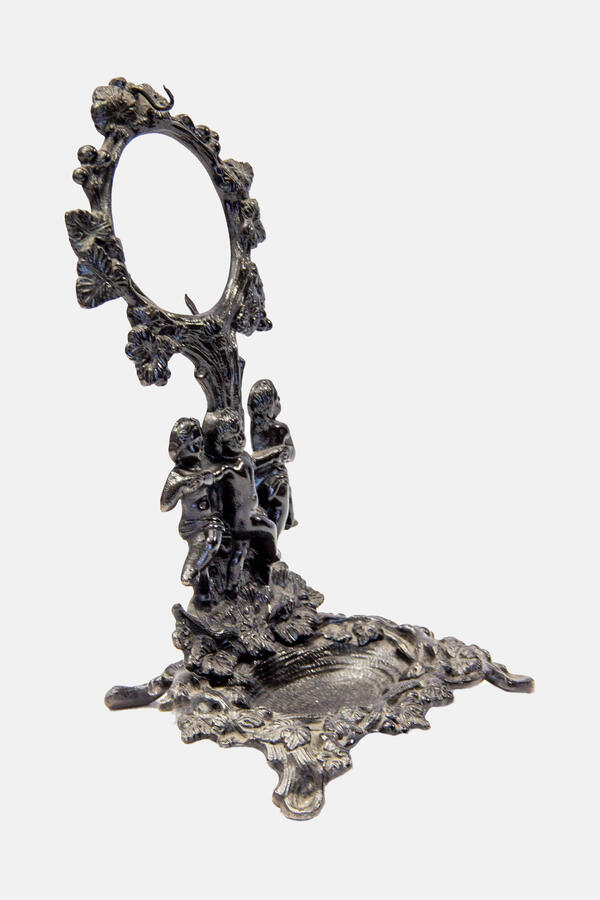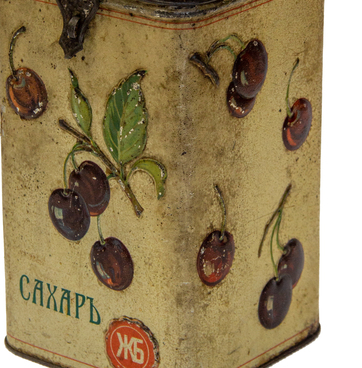The cast iron watch stand consists of two parts connected by a single bolt, and looks like a grape vine in the form of a tree. The lower part of the watch stand features figures of three dancing half-naked putti. A Putto is a figure of a little boy prominent in Renaissance, Baroque and Rococo art. The crown of the tree is a round frame woven from grape leaves and bunches of grapes, with photo holders on the reverse side. At the top of the frame there is a hook for hanging the watch. The base of the watch stand has the form of a shallow oval tray with a vine around the circumference. The surface of the watch stand is painted with glossy black paint.
In the old days, a watch stand was used to demonstrate pocket watches at home. The watch stands were ornate decorative prestige items. Upon returning home, a gentleman left his pocket watch on the watch stand, and they were used as an ordinary desk clock. The watch was either hung on a hook, or, as in the case of the exhibit, mounted on top of a raised support.
The first stands appeared in the 18th century after the mass production of pocket watches was established. They found their place in bourgeois circles. The motifs of the decor of early watch stands are diverse. Common motifs are idyllic landscapes, animals, often lions and eagles, and motifs from Greek mythology. A popular motif was the god of time Chronos and his attributes: an hourglass, a book, a scythe or a skull. During the period of classicism and Biedermeier, the forms became more strict. Bronze, brass or cast iron were used as materials suitable for the industrial production of watch stands. Some industrially manufactured watch stands were shown at world fairs of the 19th century and gained wide popularity due to their fame and low price. The development of wristwatches in the 20th century led to a rapid decline in demand for pocket watches and, consequently, watch stands.
The exhibit was made, most likely, at the Kasli factory. The stamp on the exhibit has not been preserved, however other copies of this model feature stamps of the Kasli factory. Judging by the product catalogs of the Kasli plant, watch stands of this model were produced from 1900 to 1914. The sculptural composition itself was taken from a model manufactured at the Royal Prussian Iron Foundry in Berlin.




